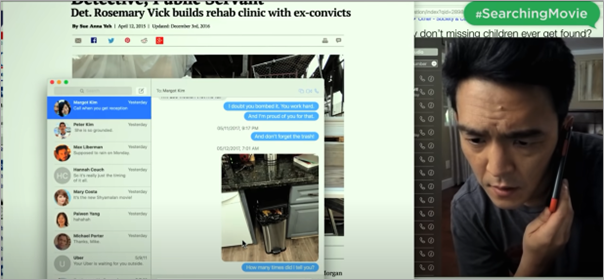In the days before social media and the internet became all-encompassing aspects of our daily lives, Open Source Intelligence (OSINT) was mainly used by law enforcement, intelligence agencies, and journalists to investigate individuals.
Now, as we become ever more digitally connected and our lives become more intertwined with mobile apps that collect our personal information, OSINT techniques have become accessible to anyone, and it is easier than ever for individuals to conduct their own investigations.
As a result, there has been a proliferation of examples of OSINT being used in films and television shows as characters seek to investigate individuals or companies. In this new series, NetWatch analyst Adam Finnigan highlights five such examples.
The second novel in John Le Carre’s acclaimed ‘Karla’ trilogy, the film adaptation of Tinker Tailor Soldier Spy was released in 2011. While the story mainly revolves around covert surveillance and other tactics commonly associated with intelligence agencies during the Cold War, it still features the use of Open Source Intelligence techniques. In one scene, an MI6 analyst reviews archival newsreel footage of a parade in Moscow, and this gives important clues as to the background of a supposed Soviet defector, and where his true allegiance lies.
The use of OSINT in the story is particularly noteworthy given how accessible such information has become today. Nowadays, many newspapers publish articles and newsreels online, and other public records such as Title Deeds for properties and company accounts are also accessible on the internet. This highlights the ease with which individuals can now access information that was once only available to those who physically made the effort to go to dedicated libraries or government offices.

The 2018 film “Searching” offers a compelling example of OSINT usage in modern media. The movie is unique in that it plays out entirely on computer screens and through social media apps and news reports. The plot follows a father on a desperate search for his missing daughter, who must rely on whatever information he can access as a civilian. In this case, OSINT techniques become his most valuable tool, as he scours social media, performs reverse image searches on posts, and uses geolocation data to track his daughter’s last known whereabouts.

“You” is a psychological thriller television series on Netflix, based on the novel of the same name by Caroline Kepnes. The story follows a man named Joe Goldberg, who becomes infatuated with a woman named Guinevere Beck. Joe works at a bookstore and begins to use social media to track Beck’s every move, learning everything he can about her, and gradually inserting himself into her life, using his knowledge of her likes and interests to manipulate and control her.

“Hunted” is a reality TV show on Channel 4 that challenges ordinary people to go on the run and evade capture by a team of expert investigators for 28 days. The show is based on the premise of what it would be like to live off the grid and try to disappear in a modern world where surveillance technology is everywhere. OSINT methods are heavily used, notably the monitoring of social media profiles owned by those being hunted to determine their whereabouts, predict their future movements and research known associates to build a better understanding of who may aid their escape.

“Don’t F**k With Cats” is a true crime documentary series on Netflix. The series follows a group of online sleuths who set out to track down a man who posted a video of himself killing kittens online. They utilise a variety of OSINT techniques, such as reverse image searching to identify the location of the videos, analysis of the killer’s social media profiles and online activity, and analysis of the metadata of the videos. The series is praised for its gripping storytelling, exploration of the online world, and examination of the impact of social media on crime and justice. It has sparked conversations about the ethics of online vigilantism and the power of online communities to solve crimes, and highlights the importance of attribution, in that confirmation bias could result in innocent lives being ruined by false accusations and misdirected social justice.

Whilst social media usage and the sharing of personal information has increased over recent years, this has also given rise to privacy movements. At NetWatch we have observed a significant increase in individuals resorting to temporary posts or adopting aliases online to safeguard their privacy. In response to these evolving trends, we remain committed to innovation and continuously adapt our techniques to ensure we maintain our position as the UK’s foremost provider of Open Source Intelligence investigations. By embracing these changes and staying ahead of the curve, we strive to provide our clients with the most comprehensive and reliable information in this rapidly changing digital landscape.